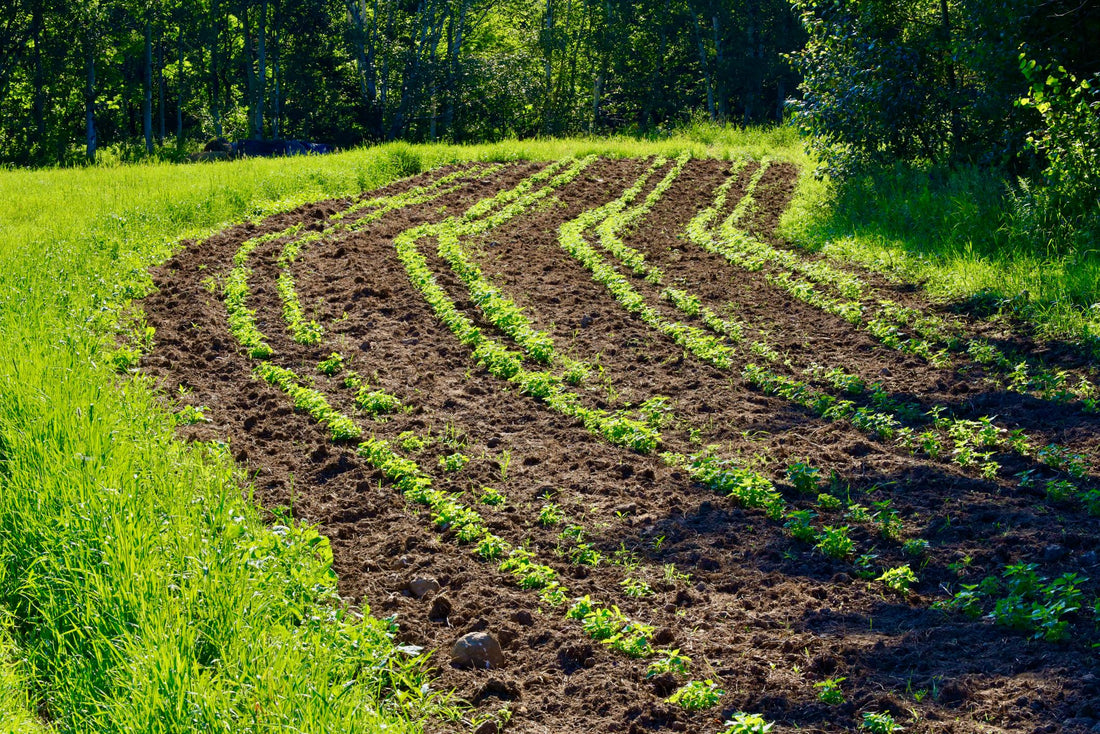
9 Surprising Facts About Nettle: A Stinging Superstar of the Herb World
Nettle (Urtica dioica) might be one of the most misunderstood herbs in the garden. Known for its sting, yes—but also beloved for its powerhouse nutrition, deep green energy, and quiet generosity. Here at La Ferme À Ciel Sur Mer, we grow nettle not just because it’s useful (though it is!) but because it’s a plant that teaches, strengthens, and gives back—season after season.
Whether you’re already a nettle lover or you’re still cautiously admiring it from a distance, these fun facts will help you see this wild, wonderful herb in a whole new light.

1. Yes, It Stings—But Only When Fresh
Let’s start with the obvious: fresh nettle leaves are covered in tiny hairs that release formic acid and histamine when touched, causing that familiar sting. But once nettle is dried, steamed, sautéed, or steeped, it loses its sting entirely—and becomes safe (and delicious) to consume.
On the farm, we wear gloves for harvesting, but once it’s dried, it’s one of the gentlest herbs we work with.
2. Nettle Is a Nutritional Powerhouse
Dried nettle leaf is rich in minerals like calcium, magnesium, iron, and potassium. It’s also high in chlorophyll and vitamin C. Many herbalists consider it a “nourishing tonic”—an herb you can drink daily to support energy, vitality, and long-term wellness.
It’s one of the reasons nettle forms the base of so many of our tea blends. It brings strength, depth, and a green, mineral-rich body to any cup.
3. It’s Not Just a Leaf—The Root and Seed Are Also Used
Most people know nettle for its leaves, but herbalists also use the roots (often for prostate or urinary support) and seeds (as an adaptogen or kidney tonic). Nettle is one of those plants where nearly every part has value—and each part has a different personality and gift.
4. Nettle Has a Long Folk History in Europe and North America
Nettle has been used traditionally as food, fiber, and medicine for generations. In many European folk traditions, it was associated with protection and vitality. In North America, various Indigenous communities used it for joint support, nourishment, and even to stimulate circulation through topical stinging (a practice known as urtication).
5. Nettle Once Dressed You—Literally
Before cotton became widely used, nettle was a common textile fiber in parts of Europe. Its fibers were spun into strong thread and woven into fabric for everything from clothing to fishing nets. In fact, during World War I, German uniforms were made from nettle cloth!
It’s a surprisingly versatile plant—practical, sustainable, and rooted in tradition.
6. It’s One of the Best Companion Plants in the Garden
Nettle improves the health of nearby plants by attracting beneficial insects and improving soil fertility. It’s especially loved by ladybugs and hoverflies (natural pest control allies), and it enhances the vitality and flavor of neighboring herbs.
7. Nettle Tea Tastes Like the Forest After Rain
If you’ve never tried nettle tea, you’re in for a surprise. It doesn’t taste like spinach or dandelion (two other mineral-rich greens). Instead, it has an earthy, green, slightly nutty flavor that’s both grounding and refreshing.
We often describe it as tasting like the forest floor after a summer storm—rich, alive, and quietly invigorating.

8. Spring Nettle Is a Seasonal Treat
Nettle is at its most tender and vibrant in early spring. That’s when we harvest the top few inches of each plant, often steaming it like spinach or folding it into soups and pesto. Cooked nettle has a slightly sweet, savory flavor that pairs beautifully with lemon, garlic, or cream.
It’s also one of the first signs of life each spring—rising up through the soil like a green exhale after winter.
9. It’s a Favorite of Herbalists and Farmers Alike
We reach for nettle often—when we feel depleted, when our energy is low, or when we simply want to reconnect with something steady and strong. It’s the kind of herb that quietly restores over time, building up the system without fanfare.
On the farm, it’s one of the first plants we offer apprentices to work with. It teaches resilience, patience, and the beauty of humble strength.
Ready to Work with Nettle?
Whether you’re brewing it in tea, cooking it fresh, or just admiring its fierce greenness in the garden, nettle has a lot to offer. You can find our organically grown dried nettle leaf in our online shop—harvested, dried, and stored with care at La Ferme À Ciel Sur Mer.
And if you’ve never sipped a cup of nettle tea before, may we suggest starting with a Nettle & Tulsi blend—a bright, nourishing favorite on the farm that feels like a deep breath of fresh air.

Related Posts:
- Get o Know Your Herbs: Flavor Profiles & HealingTradition of our Farm-Grown Herbs
- Health Benefits of Stinging Nettle
- Understanding Herbal Actons: A Guide o Herbal Healingand Plan-Based Support
- What is Organic Netle? Does it Live up to the Hype?
- Nettle Seed: Growing, Harvesting and Loving the Plant Behind the Sting
Interested in knowing more about what's going on on the farm? Our occasional emails bring you stories from the field, new herbs for sale, and herbal insights.
🌱 Browse our Organic herbs or Sign up for our newsletter to stay connected.